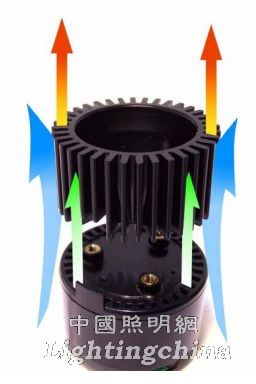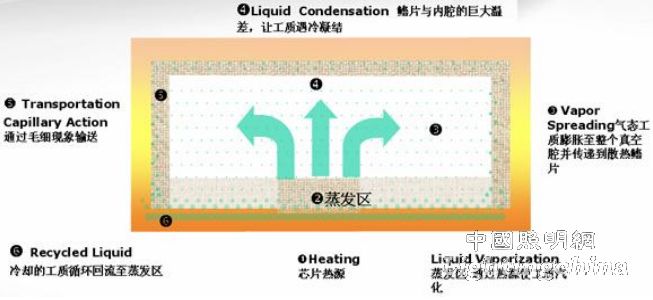1, SynJet replaces the fan
Applied to LED lighting, the general principle of SynJet is that a diaphragm-like component vibrates the air in the compression chamber at a certain frequency. After the air is compressed, it is ejected from a small nozzle at a high speed to form an air bomb to the heat sink. The bomb drives the air around the fins to remove heat. According to reports, the technology was originally used for the heat dissipation of the chip, and after the rise of LED lighting, it was used to replace the huge fan.

Compared to the fan, the SynJet thermal module has the following features:
• Power consumption is lower than that of the fan: The main energy-consuming part of the SynJet thermal module is a drive module, the diaphragm, and the power consumption of the motor part of the fan is lower. According to reports, taking 10W MR16 as an example, after a long time of lighting, the LED soldering temperature is about 50 ° C; 15W Par20, about 55-60 ° C.
• Small size and light weight: Due to the special structure of the SynJet thermal module, it can be used in a small size and can be used in some downlights where the fan cannot be installed. The small size and good heat dissipation enable large-sized LED lamps to achieve greater power and brightness.
• Low noise: The motor of the fan is inevitably generating noise when it is rotating. If it is used for indoor lighting, the noise will be more obvious when it is quiet at night. The diaphragm of the SynJet thermal module vibrates at frequencies that are insensitive to the human ear, with little noise and no noise. According to reports, the SynJet thermal module has three sets of frequency adjustable.
• Long life: SynJet cooling module has a simple structure with a life expectancy of 100,000 hours, while fans usually only have 5,000 hours. For long-life LED lamps, 5000 is obviously a bit of a hindrance. When applying the SynJet thermal module, one thing to pay special attention to is that the entire lamp cup should have an opening to ensure that the internal air can be exchanged with the outside world, otherwise the heat dissipation effect of the SynJet will be compromised.
2, soaking plate technology
There is a regularity in heat energy, which is transmitted to places with low thermal resistance. If heat cannot be conducted through the heat sink, it will be transferred to the PCB. Long-term operation will cause the PCB to overheat and deform. Therefore, the huge heat energy per unit area when fully loaded is the most difficult heat dissipation problem for a graphics card. The following is a horizontal comparison of several conventional heat dissipation methods in heat transfer density:
A 50cm2, 6mm thick vacuum temperature plate Heat Flux has a heat transfer density of 115W/cm2, which is more than 10 times that of a copper heat pipe. The Vapor Chamber vacuum cavity soak plate has better thermal diffusion performance than a pure copper substrate, and is particularly suitable. For the use of high-power CPUs and GPUs.

As shown in the figure, it is a schematic diagram of the heat dissipation process of the vacuum chamber soaking plate. The heat generated by the chip is quickly absorbed and conducted by the large-area soaking plate, so that the packaged medium starts to be converted into liquid by the liquid, and the heat energy is taken out through the evaporation zone. The gaseous medium expands into the entire vacuum chamber, and the heat that is carried out is quickly conducted to the entire copper inner cavity of the package and conducted to the aluminum fins. The heat energy of the aluminum fins is forced to convectively cool by the fan, so that the working medium loses thermal energy to cool, and changes to a liquid state through the capillary wall of the inner cavity, then returns to the bottom evaporation zone, absorbs new heat energy, and re-gasifies the tropical Out, form a loop.
To sum up, the advantages of vacuum soaking plates are:
1. The impedance of the soaking plate is one of the lowest in the industry. When 300W is applied to 25mmx25mm, the measured value is 0.05C/W.
2. Dimensional shape is very flexible, the average hot plate area can reach 200 mm x 200 mm
3. Overcoming the directional restrictions and improving the performance of electronic components/systems